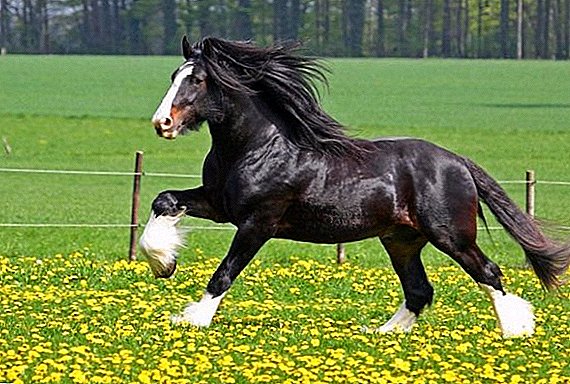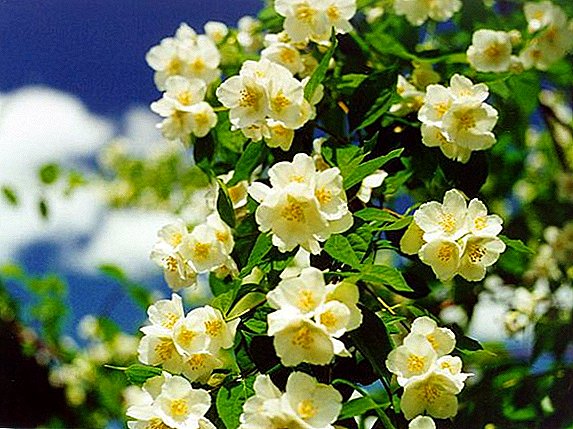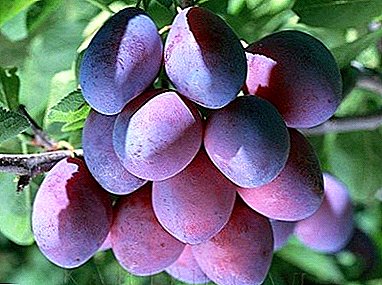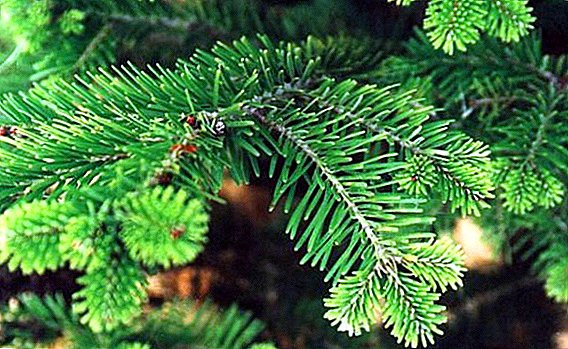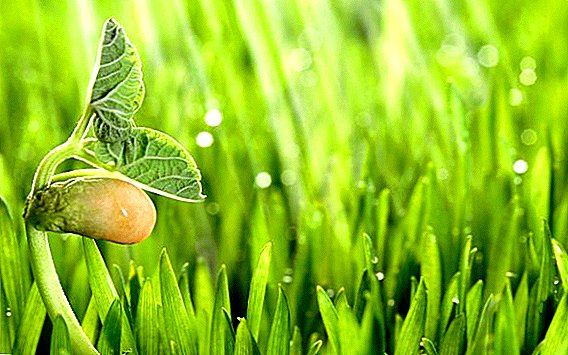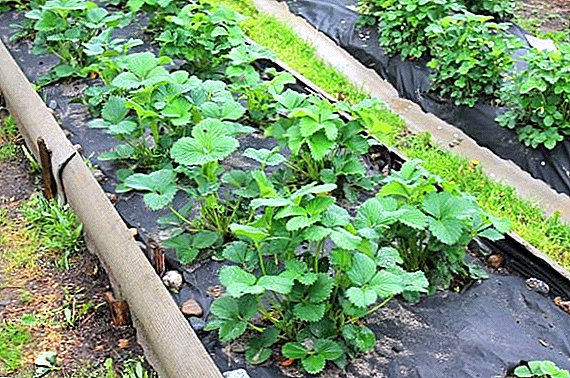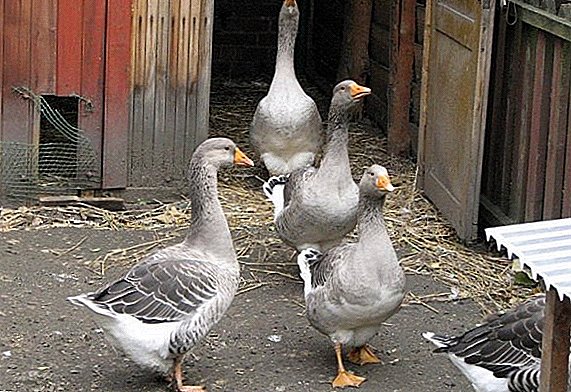 In private small farms, cows are considered more in demand, and bulls are rarely kept, preferring to give them up for meat some time after birth. Of course, this does not apply to breeding individuals, but they are more often found on farms, where they are kept as producers.
In private small farms, cows are considered more in demand, and bulls are rarely kept, preferring to give them up for meat some time after birth. Of course, this does not apply to breeding individuals, but they are more often found on farms, where they are kept as producers.
Whatever it was, but often the breeders need to know at least the approximate age of the animal, and it is very difficult to do this without appropriate records.
In our article we will talk about the most popular ways of determining the age of a bull, and also touch on the topic of the most optimal age for mating and slaughter of these large animals.
How many bulls live at home
With good conditions and nutrition, a cow can live at home for more than 20 years, but the bull is not affected. Usually males live a little less females, so even with the best living conditions, this period is unlikely to be more than 15 years.
Learn how to contain a bull-manufacturer, how to fatten a bull for meat.The main factors affecting longevity include the following:
- climatic conditions of the habitat (height above sea level, temperature in winter, swampy terrain);
- home country (for example, in India, the bull will not surrender to the slaughterhouse);
- the breed of the animal and its individual physiological characteristics, which may be the result of transferred ailments, hereditary factors or congenital pathologies;
- maintenance and care that meets all sanitary and hygienic requirements.

Of course, with a regular and balanced diet with frequent walks and free grazing in the summer, the life expectancy of a bull will be much longer.
Did you know? One of the most famous officially registered record-breaking bulls by age is the bull Augustus, a Highland breed. He died at the age of 18.
How to determine the age of a bull
Without documenting the age of a bull, you can only find out the approximate number of years he has lived. The most reliable means of obtaining this information is the assessment of the condition of the teeth and horns, as well as the appearance of the male.
True, with regard to the latter, it is not necessary to speak of too high reliability of such data: everything depends on the intensity of feeding and the conditions of detention.
Appearance
The main thing that you can tell the general appearance of the bull - a young, medium or old animal is in front of you. Usually attention is paid to such features as the proportionality of the development of individual parts of the body, the condition of the skin and hair. In addition, the weight and height of the male can be quite informative, especially if we are talking about purebred individuals, and you are aware of the breed standards.  Thus, a bull's weight of not very large breeds can reach 150–190 kg by the age of six months, while in a year these figures reach 400 kg or even more. At one and a half years, many males already weigh 600 kg.
Thus, a bull's weight of not very large breeds can reach 150–190 kg by the age of six months, while in a year these figures reach 400 kg or even more. At one and a half years, many males already weigh 600 kg.
However, we recall that much will depend on the care of the animal and the balance of its nutrition, so for a start, it is still worth exploring the characteristics of a particular breed and the weight gain for each particular individual.
Find out which bulls are the biggest, how the bull's horns are arranged, why the bull is inserted into the ring.
Teeth
The study of tooth enamel and monitoring the state of the animal's teeth have always been considered one of the most accurate methods for determining its true age. There are several criteria, and above all it is:
- the appearance and erasure of milk incisors;
- loss of milk teeth and the appearance of their replacement;
- rubbing surface shape;
- progressive discrepancy of incisors and their shortening;
- time of appearance of molars.
 A pair of incisors located in the middle is called hooks, two teeth to the right and left of them are internal averages, the next are external averages, and the extreme right and left teeth of the arcade are edges. It is their condition in each individual period of time that will indicate the true age of the animal.
A pair of incisors located in the middle is called hooks, two teeth to the right and left of them are internal averages, the next are external averages, and the extreme right and left teeth of the arcade are edges. It is their condition in each individual period of time that will indicate the true age of the animal.Important! The main difference between milk teeth and permanent teeth is their size. The calf's teeth are thin and narrow, and only with age they are replaced by wide and long.Consider the change in the teeth during the maturing of the bull:
- 0-1 month - the calf appears dairy incisors, okraki, and then the molars, which remain unchanged for almost a year;
- 10-14 months - on the lingual surface of the hooks, the inner middle, and then the outer middle milk teeth, all enamel begins to rub off;
- 18-22 months - dairy hooks gradually fall out, and their place is occupied by permanent, reaching its full development closer to the two-year age of the bull;
- 30 months - internal middle dairy incisors also fall out, which are replaced by permanent ones (they are fully formed before the age of three);
- 3 years - the external averages change, but the constants grow only by 3.5 years;
- 3.5-4 years - are replaced by permanent and dairy okrayk.

Erasure of tooth enamel is also considered as informative in terms of age. So, for 4 years, it is very clearly visible on the hooks, the inner middle, and a little later on the outer middle teeth.
Closer to the fifth year of life, erasure of the upper layer of the tooth is observed on the edge, and at 6 years the bull can form an extended shape of the edge of the edge, with a significant depression from friction on the hooks and internal middle teeth.
Did you know? The cattle have very mobile jaws, which allows cows to chew grass, making up to 100 movements every minute.
At the age of seven, males have almost completely erased enamel of the lingual surface of the hooks, on which only small corners remain, disappearing by 7.5 years.
In eight-year-old bulls, the rubbing surface of the hooks acquires a quadrangular shape and deepens slightly. Around the same time, there is an erasure of the lingual enamel on the inner and middle teeth.  Closer to the nine-year-old bull in these places a permanent form of the rubbing surface is established, and further erasing of enamel only continues:
Closer to the nine-year-old bull in these places a permanent form of the rubbing surface is established, and further erasing of enamel only continues:
- in a 10-year-old animal, it disappears from the lingual part of the okrayk (at the same time the thickness and length of the incisors are reduced, which makes the teeth more square);
- at 11-12 years old, the incisors become more rare, and the hooks, the inner, middle and outer teeth become more and more rounded (the root star is already clearly visible);
- after 12 years, determining the age of a bull according to the state of the teeth is no longer so simple, except that closer to the age of 13-14, the enamel disappears completely from all teeth, and at 15-18 years old there are only rounded roots - hemp.
Important! Such a scheme for changing the state of the teeth is typical mainly for mid-season bulls of the dairy direction, while in the representatives of the meat direction, the teeth are changed a little faster (by an average of 1 year), and in working individuals it lags by about a year.
Horns
The newborn calf already has horn tubercles, of which its horns will later appear. Starting from about 14-16 days of life in the places of their appearance, the skin thickening is already clearly visible, and after one month of age the hair falls on it and the formation of the horn core begins (it completely stops closer to 2 months of life).  Closer to the third month, the bull's horns reach a length of 1 cm, and in the future, from 17–20 months of life, their growth is almost uniform: the length increases by about 1 cm monthly. This means that if you measure the length of the horn along the outer greater curvature (from base to tip) and add 1 to the value in centimeters, you can get the age of the young animal in months.
Closer to the third month, the bull's horns reach a length of 1 cm, and in the future, from 17–20 months of life, their growth is almost uniform: the length increases by about 1 cm monthly. This means that if you measure the length of the horn along the outer greater curvature (from base to tip) and add 1 to the value in centimeters, you can get the age of the young animal in months.
After 20 months of age, the growth of horns slows down and is about 2.5 mm in 30 days, so it will not be easy to calculate the exact age of the males.
Learn how the mating of cattle.
When a bull can cover a cow
Breeding producers are always highly valued, therefore in large farms there are always several males for the purpose of further reproduction.
The optimal age for use in these needs is 13-14 months for individuals of meat breeds and 14-17 months for bulls of meat direction. To determine the readiness to cover a cow and successfully conceive a calf, a semen sample is taken: at least 10% of the spermatozoa must be active and mobile.  Also, as a good diagnostic method of male readiness for mating, the scrotum is measured using a centimeter (its length should not be less than 30 cm) and monitor the behavior of bulls, which helps determine the degree of development of their sexual activity.
Also, as a good diagnostic method of male readiness for mating, the scrotum is measured using a centimeter (its length should not be less than 30 cm) and monitor the behavior of bulls, which helps determine the degree of development of their sexual activity.
Important! Early use of the bull for mating can lead to depletion of the animal, and hence the effectiveness of insemination will be low. Moreover, the calf from such a producer is often born with pathologies.With the constant presence of the male in the herd, his activity is artificially limited:
- at the age of 1.5, males are no more than twice a week;
- 2.5 years allow no more than three weekly ponds;
- after 2.5 years, admit to cows 2-3 times a day.
 The average lifespan of sires is 14 years. If the animal is not planned to be used for these purposes, then it will be preferable to castrate the male at an early age - from three to seven months, removing the testes 3-4 weeks before the onset of its puberty.
The average lifespan of sires is 14 years. If the animal is not planned to be used for these purposes, then it will be preferable to castrate the male at an early age - from three to seven months, removing the testes 3-4 weeks before the onset of its puberty.Depending on the breed characteristics, these periods may be slightly shifted, but in any case, after the procedure, the bull will become calmer and begin to gain weight well.
Castration of very small individuals (up to 8 weeks of age) is not recommended, since there is a high probability of abnormal development of the organs of the genitourinary system of the animal and its limited growth. After 8–9 months of life, this procedure no longer makes sense, since this will have almost no effect on the total pre-slaughter weight.
Find out which breeds of bulls are preferable for fattening.
At what age are bulls slaughtered?
In private farms and on large farms, bulls rarely grow meat for more than 15 months for early ripening and 18 months for longer-developed breeds.
Usually at this age, the males gain the necessary body weight, especially if they are provided with enhanced nutrition 3 months before slaughter. You can send to the slaughter before, but from an economic point of view it is unprofitable, since the meat output will be incomplete.

During fattening, it is important to give the calves not only fresh and succulent feed, but also concentrates, paying more attention to the feed in winter.
Each owner of cattle must know about the peculiarities of the development of the bulls in each separate year of their life, which will make it possible to apply this knowledge in practice and to get high-quality products.


